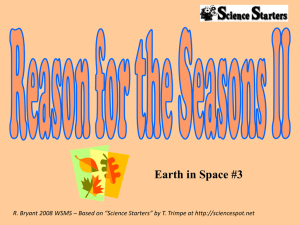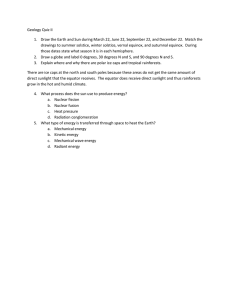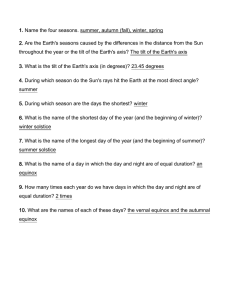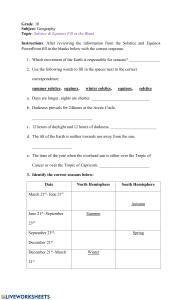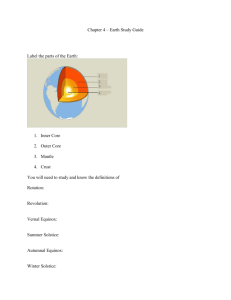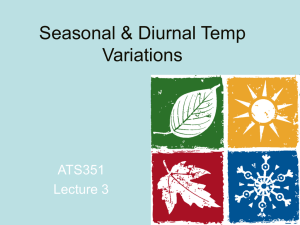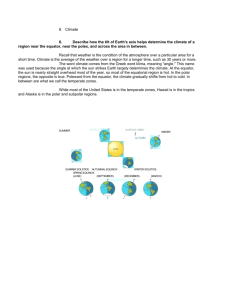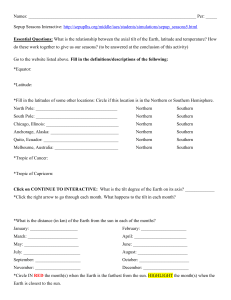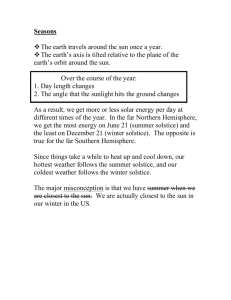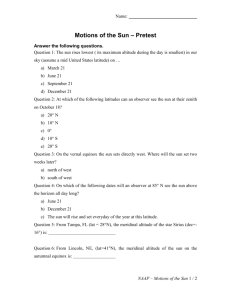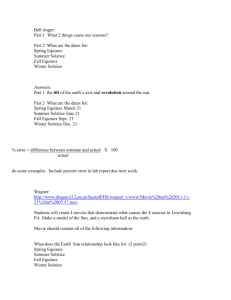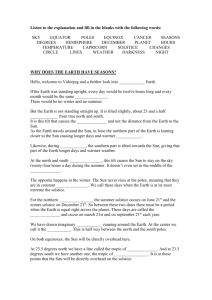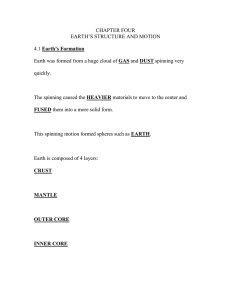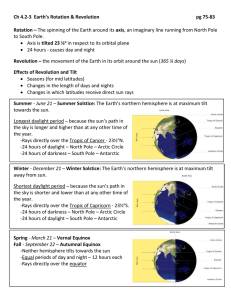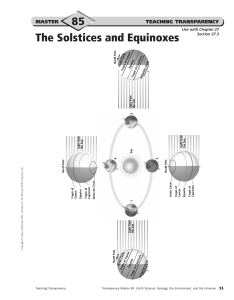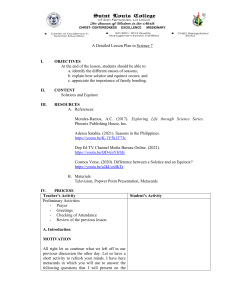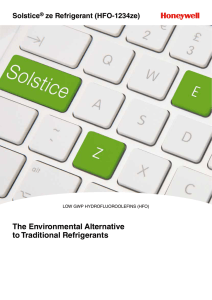Name: ____________________________ Directions: Earth’s Movements and the Change of the Seasons
advertisement
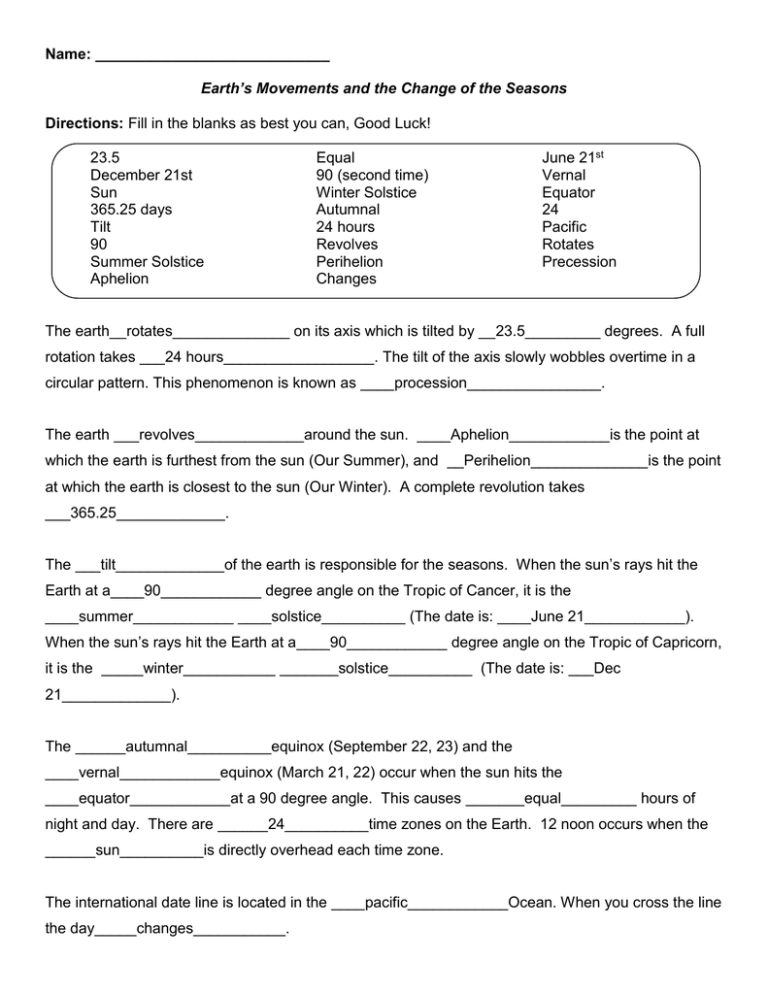
Name: ____________________________ Earth’s Movements and the Change of the Seasons Directions: Fill in the blanks as best you can, Good Luck! 23.5 December 21st Sun 365.25 days Tilt 90 Summer Solstice Aphelion Equal 90 (second time) Winter Solstice Autumnal 24 hours Revolves Perihelion Changes June 21st Vernal Equator 24 Pacific Rotates Precession The earth__rotates______________ on its axis which is tilted by __23.5_________ degrees. A full rotation takes ___24 hours__________________. The tilt of the axis slowly wobbles overtime in a circular pattern. This phenomenon is known as ____procession________________. The earth ___revolves_____________around the sun. ____Aphelion____________is the point at which the earth is furthest from the sun (Our Summer), and __Perihelion______________is the point at which the earth is closest to the sun (Our Winter). A complete revolution takes ___365.25_____________. The ___tilt_____________of the earth is responsible for the seasons. When the sun’s rays hit the Earth at a____90____________ degree angle on the Tropic of Cancer, it is the ____summer____________ ____solstice__________ (The date is: ____June 21____________). When the sun’s rays hit the Earth at a____90____________ degree angle on the Tropic of Capricorn, it is the _____winter___________ _______solstice__________ (The date is: ___Dec 21_____________). The ______autumnal__________equinox (September 22, 23) and the ____vernal____________equinox (March 21, 22) occur when the sun hits the ____equator____________at a 90 degree angle. This causes _______equal_________ hours of night and day. There are ______24__________time zones on the Earth. 12 noon occurs when the ______sun__________is directly overhead each time zone. The international date line is located in the ____pacific____________Ocean. When you cross the line the day_____changes___________.
